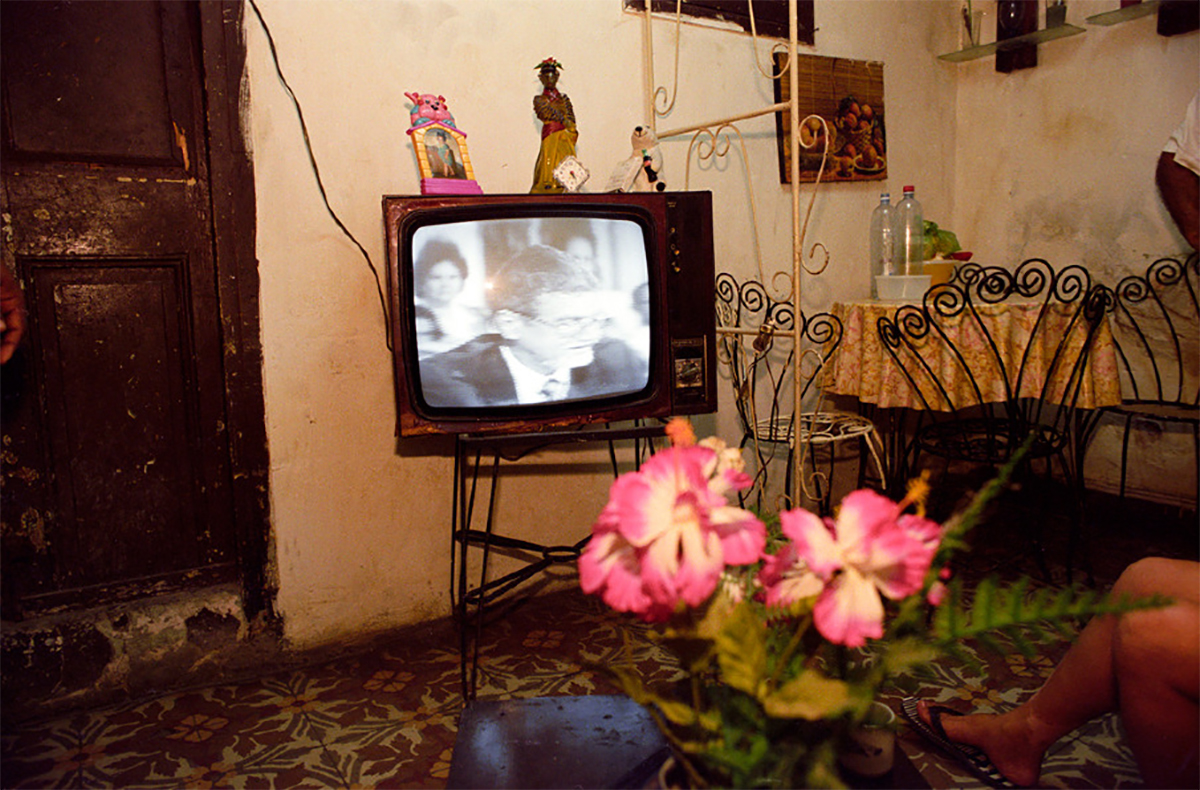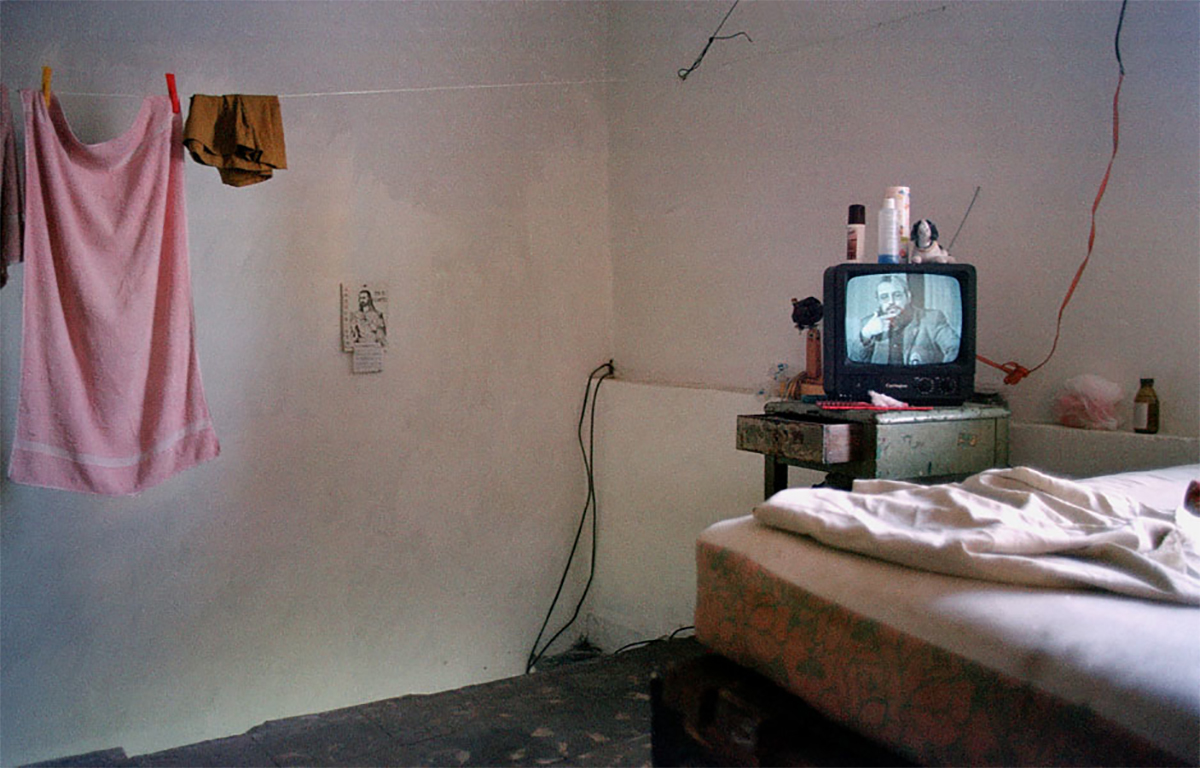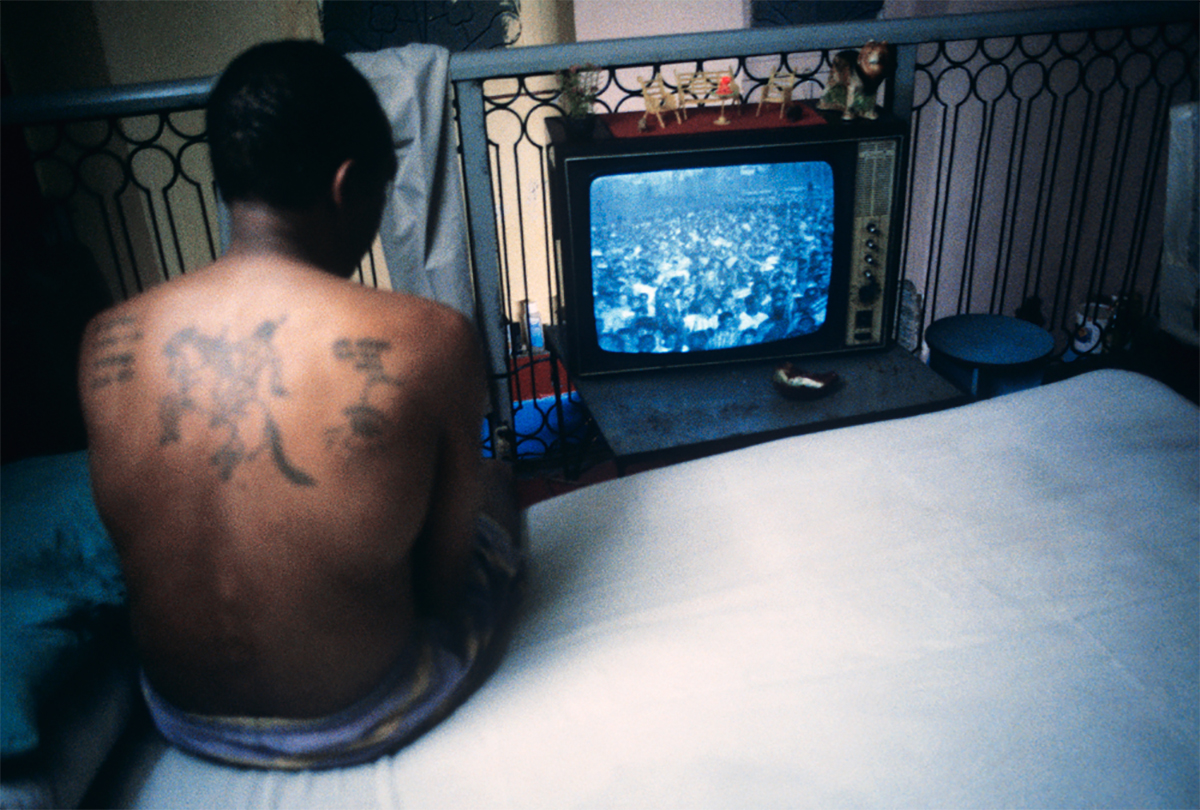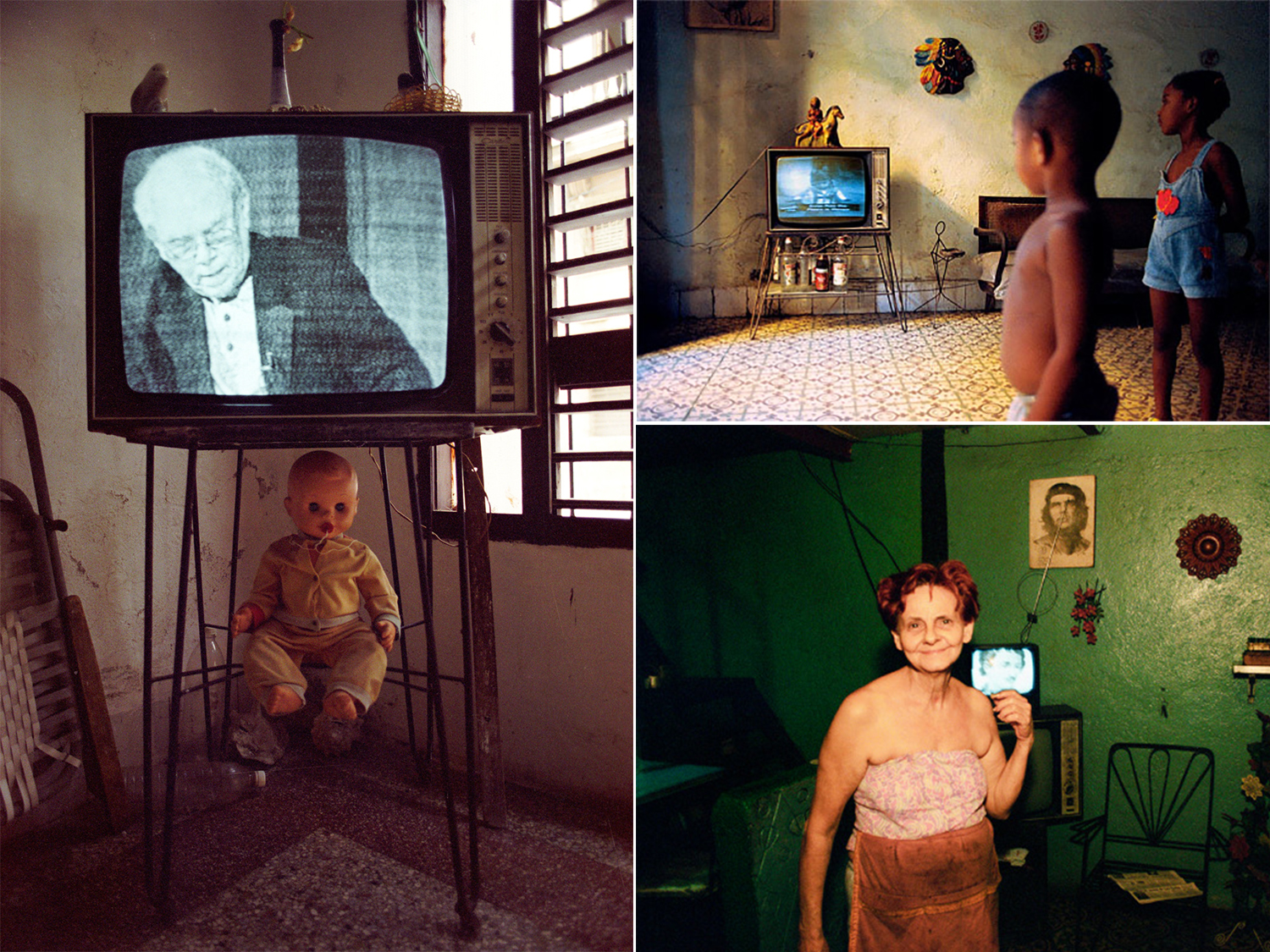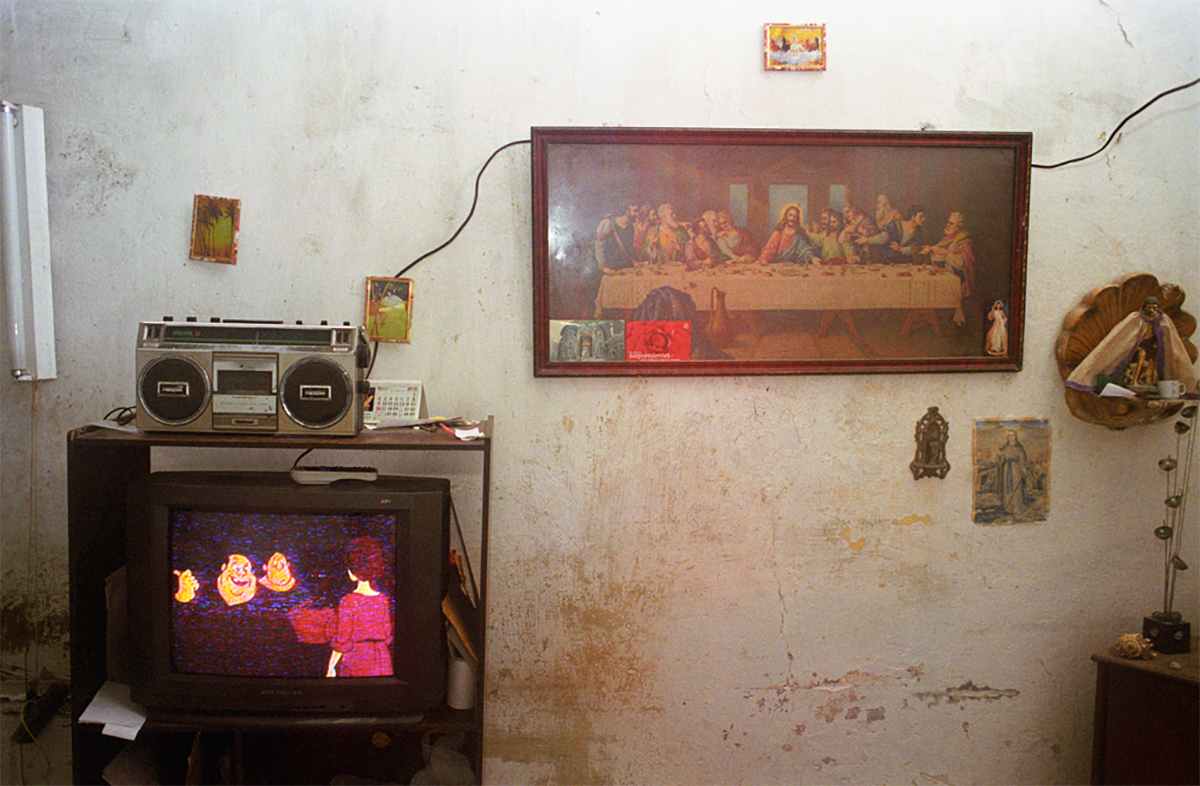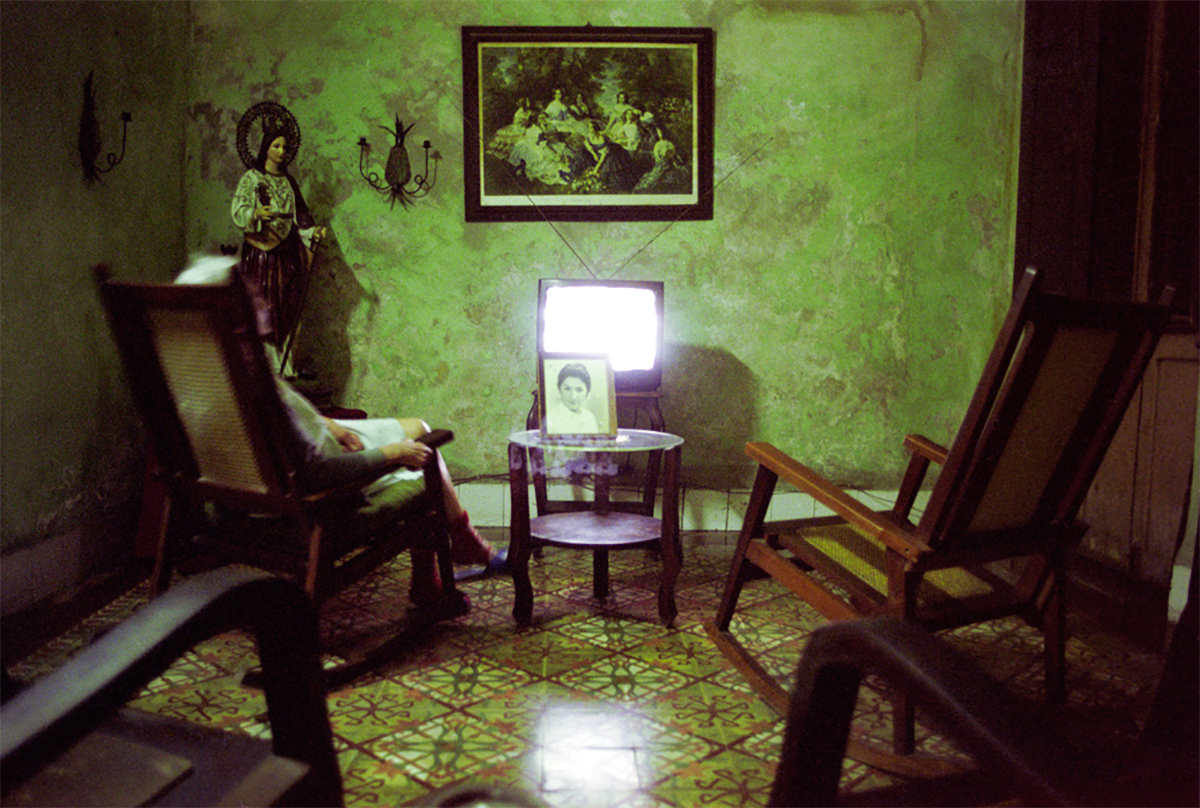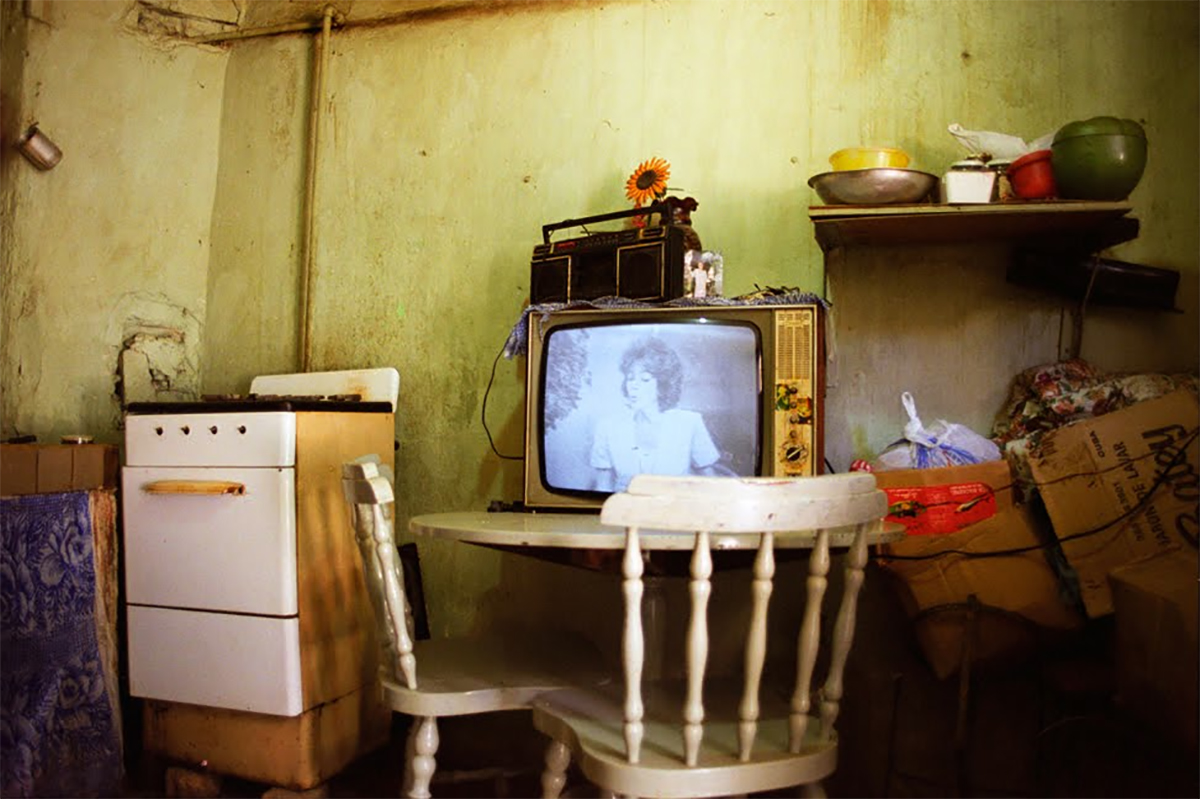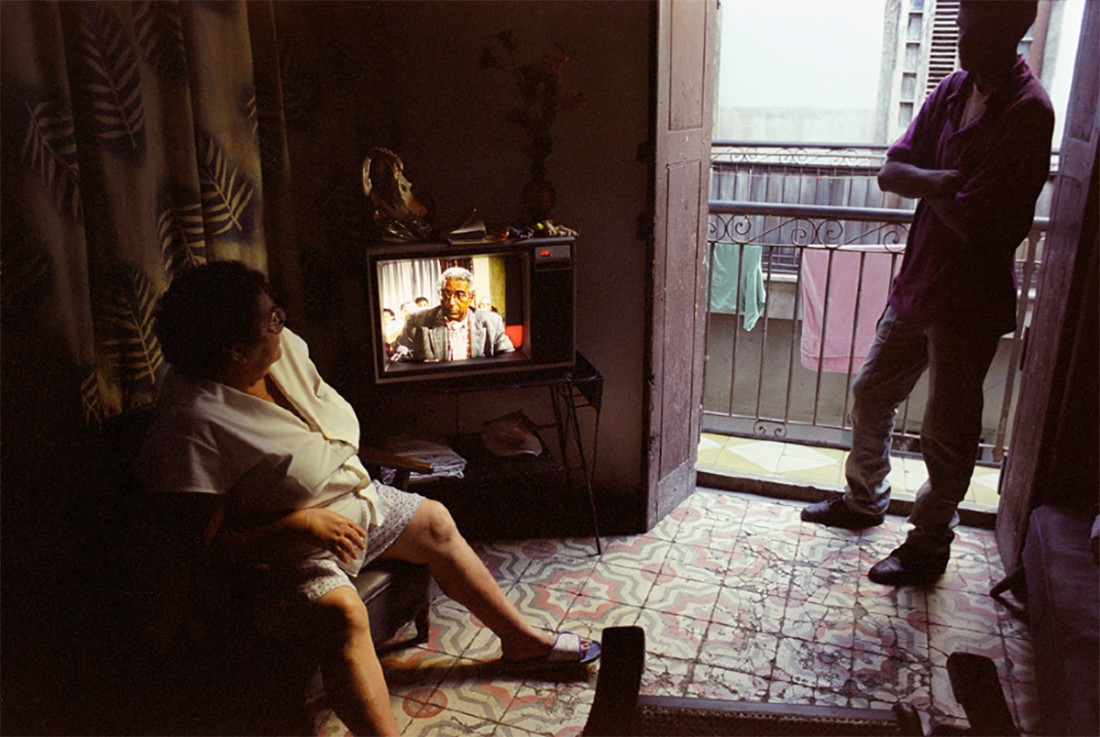
“It happened by chance. In 2000, I tagged along with a good friend on a two-week trip to Cuba. I took my 35mm camera and a bunch of film. The first thing I noticed in Havana was that the city was dark at night. There were no streetlights, porch lights or living-room lamps. It was pitch black except for the faint colorful glow spilling out of open doors everywhere, and it came from the TVs. The light captivated me. For the next two weeks I wandered around, slipping in and out of strangers’ living rooms. Each time I came across an open door and a working TV set, I would ask if I could take a picture of it. The answer was always yes. Nobody seemed to think it was an odd request and it was usually accompanied by a Cuban coffee or rum.
There were some fascinating developments in the living rooms of Old Havana. Many of the sets that I saw in 2000 — 1980s Russian models and mid-century TVs from the U.S. — had been replaced with shiny new imports from China. The cheap, new TVs were surrounded by the same vintage fans, rickety ornaments and faded family photographs. It seemed the only thing that had changed was the TV itself.
In Cuba, TV seems to carry even a weightier cultural role than it does in the U.S. During broadcast hours in Cuba, all TVs are on. The TV is on during the day, when it is background noise or the main event. At night, each airing of the latest telenovela is like a sacred viewing party when friends and neighbors gather. My sense is that watching TV is a cherished activity that everyone looks forward to, especially when favorite telenovelas and Hollywood movies are aired. …
The stories that I take from Havana are mainly in the photographs. I was welcomed without hesitation into so many living rooms, which is telling of the openness and generosity of the people I met. My living room stays were often brief, as I don’t speak much Spanish. The encounters consisted of animated gestural exchanges fueled by the ubiquitous cafe Cubano, almost always offered by my host.
People introduced me to family members in framed photographs who had left for the U.S., and who remained perched on top of the TV set. I often watched a little TV with my hosts in between making photographs, because it was a shared experience and almost a form of communication, as we could all react to the broadcast. After a final smile and thank you, I would take off down the street in search of another glowing TV set and an open door.”
